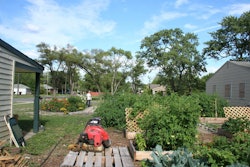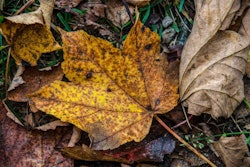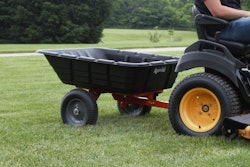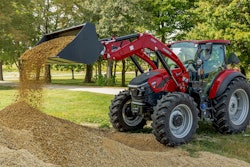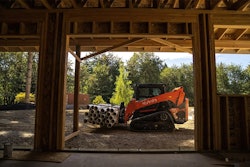 Photo: Pixabay
Photo: PixabayWhen severe hurricanes hit, they can leave many homes and businesses damaged and landscapes devastated.
Trees are often seen as a threat in severe weather situations as branches can become hazards the trunks can fall on top of structures or roads, causing infrastructure to take longer to recover after a storm. However, this doesn’t mean that trees should be expunged from the landscape entirely. There are three ways you can help increase chances of survival for your clients’ trees.
How trees are planted can play a major factor in whether they come away still standing. Grouping trees, instead of planting single specimens and making sure they are not in a straight line, can improve their odds. Trees with wide spreading root systems are also less likely to blow over, so it is important to allow trees enough room for their mature size.
Picking the proper tree species in hurricane or wind-prone areas is another good practice.
Wind-resistant plants have flexible stems that can bend without breaking. Trees with narrow leaves are often adapted for windy conditions as well. Here are a few of the trees that are known to withstand strong winds better than others.
________________________________________________________
 Photo: Wikipedia
Photo: WikipediaAmerican holly (Ilex opaca)
An evergreen that can be pruned as an attractive hedge and used to spread holiday cheer, the American holly grows well in moist, acidic, well-drained soils. It should be planted in multiples of four to allow for cross-pollination to produce the berries, which attract a number of birds. Grows 40 to 50 feet tall and 18 to 40 feet wide.
- USDA Hardiness Zone: 5-9
- Full sun to partial shade
________________________________________________________
 Photo: liz west/Flickr
Photo: liz west/FlickrLive oak (Quercus virginiana)
Iconic with the Old South, the live oak has very flexible branches that can handle hurricanes in the southeastern United States. It is an evergreen that has low branches with a broad spread. It can live for centuries and adapts to almost any type of soil. It can also tolerate salt spray and compacted soils. Grows 40 to 80 feet tall and 60 to 100 feet wide.
- USDA Hardiness Zone: 7-10
- Full sun to partial shade
________________________________________________________
 Photo: Missouri Botanical Garden
Photo: Missouri Botanical GardenSouthern magnolia (Magnolia grandiflora)
Another symbol of the South, although it can be found as far north as Maine, Michigan and Washington, the Southern magnolia is a broadleaf tree with large, fragrant flowers that bloom from May to June. It grows in an oval, pyramidal shape and attracts birds. Grows 60 to 80 feet tall and 40 feet wide.
- USDA Hardiness Zone: 6-10
- Full sun to partial shade
________________________________________________________
 Photo: Missouri Botanical Garden
Photo: Missouri Botanical GardenBald cypress (Taxodium distichum)
A conifer that looks like an evergreen, the bald cypress is deciduous and can tolerate a number of soil conditions, including standing water. It grows just as well along streets and in yards. Bald cypress is one of the more wind-resistant large trees. The needles turn from yellow green in the spring to reddish- or an orange-brown in the fall. Grows 50 to 70 feet high and 25 feet wide.
- USDA Hardiness Zone: 4-10
- Full sun
________________________________________________________
 Photo: Erin Buonocore/Flickr
Photo: Erin Buonocore/FlickrAmerican persimmon (Diospyros virginiana)
A deciduous tree that produces persimmon fruit in the fall that is similar in taste to an apricot. It has dark green summer foliage that turns yellow or reddish in the fall. It can handle a range of soils, but prefers moist, sandy soils. Its wood is extremely durable and is drought tolerant. Grows 35 to 60 feet tall and 25 to 35 feet wide.
- USDA Hardiness Zone: 4-9
- Full sun to partial shade.


